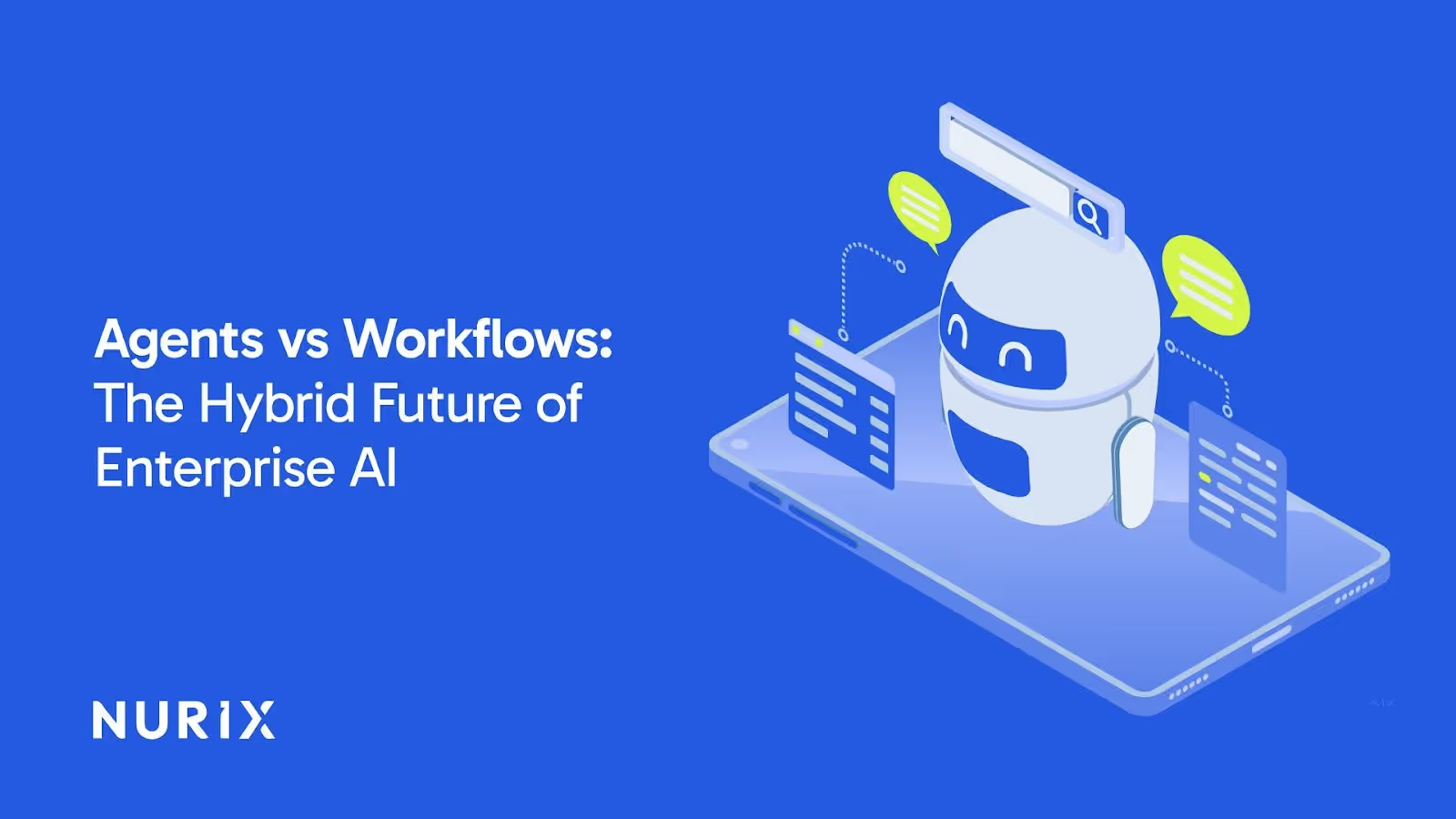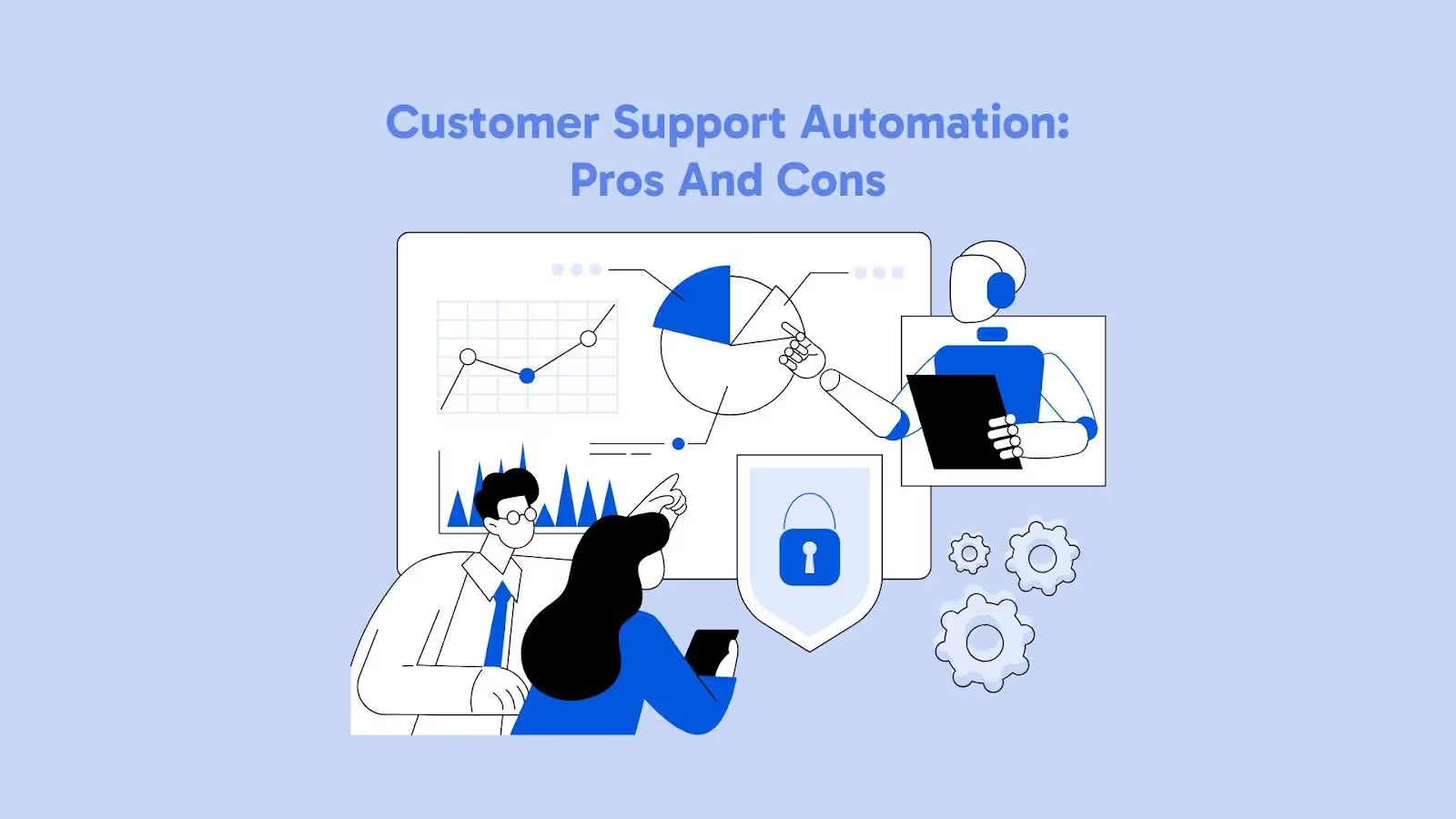Introduction
AI has become central to enterprise discussions but reliability still remains a major concern. Many leaders have seen AI give different answers to the same question or fail when placed in production. This unpredictability reduces trust and slows adoption.
In Episode 32 of Nex by Nurix, Pulkit Tyagi addresses this issue directly. Instead of thinking about agents and workflows as competing approaches, he explains why combining them is the real solution. Enterprises need both intelligence and reliability, and a hybrid design delivers exactly that.
What is an Agent
An agent is designed to operate as an autonomous loop. It starts with a goal, reasons step by step, calls the right tools or knowledge bases, evaluates results, and continues until it decides the task is complete.
This design gives agents adaptability and creativity. They can handle unexpected inputs at runtime, chain tools dynamically, and use memory to improve over time. Agents also deliver personalized outputs by keeping track of context.
The tradeoff is unpredictability. Because agents depend on probabilistic models, they can loop endlessly, wander off task, or call the wrong tool. For enterprises this unpredictability becomes a barrier to compliance, risk control, and production stability.
What is a Workflow
A workflow is a deterministic sequence of steps connected together. Each step can be a function, a process, or an API call. Workflows often include conditions, loops, and branching logic to cover specific business rules.
The strength of workflows is reliability. Every outcome is controlled, monitored, and logged. Enterprises know exactly what will happen in advance. Workflows can enforce compliance, ensure traceability, and make debugging much easier.
The tradeoff is rigidity. Workflows cannot adapt to new situations if those situations were not designed for in advance. Unlike agents, workflows cannot improvise or think. They execute rules that were predefined.
Why Both Matter
Enterprises cannot depend on only one approach. Relying only on agents introduces chaos and outputs that are difficult to reproduce. Relying only on workflows makes systems brittle and unable to handle unexpected inputs.
Agents provide intelligence and flexibility. Workflows provide control and determinism. Enterprises must use both together to solve the reliability problem and unlock real scale.
Hybrid Design Spectrum
Pulkit highlights three ways enterprises can combine agents and workflows effectively.
Agents Inside Workflows
In a customer onboarding pipeline, the workflow manages compliance. It ensures that KYC checks, approvals, and database updates follow the right order. At one of the steps, an agent can be inserted to analyze unstructured documents and extract required fields. The workflow provides structure while the agent adds intelligence.
Workflows as Tools for Agents
When an agent is solving a complex problem like preparing a quarterly business report, it should not freestyle critical data tasks. Instead the agent can call a workflow that pulls, cleans, and formats financial data. The agent receives reliable results while the workflow guarantees consistency and correctness.
Nested and Composed Models
In practice enterprises often deploy layered architectures. Agents can call other agents, workflows can call other workflows, and agents can select workflows at runtime. This composition gives scalability without losing control. It allows enterprises to design exact solutions for their business logic.
Engineering Challenges
Hybrid systems are powerful but they also bring challenges. Interface design becomes important because workflows must be callable by agents without unnecessary complexity. Error propagation is another challenge. When a workflow fails inside an agent loop, the system must define who manages the error and how it recovers.
Observability is also essential. Enterprises need structured logs that capture workflow execution and also the reasoning steps of the agent. Without this, debugging becomes incomplete.
Best Practices
From Nurix’s engineering work, Pulkit outlines several best practices. First, wrap workflows as typed actions so that agents can call them safely. Second, implement structured logging for both agent reasoning and workflow execution. Third, build monitoring layers that can detect anomalies from either side.
These practices allow enterprises to create hybrid AI systems that are safe, transparent, and ready for production.
Real World Example
Customer support is a strong example of hybrid AI in action. A master workflow ensures that every support ticket is logged, categorized, and tracked. This guarantees compliance and prevents errors in record keeping.
Within that workflow, agents provide intelligence. They can personalize replies, summarize previous interactions, and recommend next best actions. After the interaction ends, the workflow updates the CRM in a deterministic way. This ensures both compliance and intelligence are delivered together.
The outcome is faster support, better customer experience, and a process that feels humanlike. Neither pure agents nor pure workflows can achieve this on their own.
Why It Matters for Enterprises
Enterprises must balance innovation with reliability. Pure agents are flexible but unpredictable. Pure workflows are predictable but rigid. Hybrid design gives enterprises both.
Executives gain confidence that systems will comply with regulations. Engineering teams gain flexibility to handle real world scenarios. Customers experience natural and personalized interactions. This combination allows enterprises to innovate safely and at scale.
The Takeaway
Pulkit Tyagi’s core message is that it is not about agents versus workflows. It is about agents and workflows working together. Agents contribute intelligence and adaptability. Workflows contribute reliability and control. Together they create AI systems that are trustworthy and scalable.
The future of enterprise AI will not depend on choosing one side of the debate. It will depend on building a hybrid foundation where both approaches are used strategically. At Nurix this hybrid principle guides system design to deliver enterprise ready AI.
Conclusion
Enterprises today need more than demo ready AI. They need systems that can adapt to the unexpected while still guaranteeing compliance and stability. Pure agents cannot provide this and pure workflows cannot either.
The breakthrough comes when the two approaches are combined. Enterprises that embrace this hybrid model will be positioned to move faster, serve customers better, and scale without losing control.
Pulkit Tyagi’s discussion in Episode 32 of Nex by Nurix makes the path clear. The future of enterprise AI belongs to systems that combine agents and workflows. This is how AI will become reliable, intelligent, and trusted at scale.
Explore how Nurix builds hybrid enterprise AI









